How to fasten a lot of individual sheets
Good evening.
Finally, the hot weather drove me home and had a little time to write the next topic.
In my first article I told how a book can be made from fairly handy materials. I am reading that book now (by the way, the irregularities on the fly-leaf are almost completely smoothed out when the glue has dried completely).
')
In the comments there were questions in the style of "how to roll up individual sheets?" I will tell you about this today.
Of course, the result will be nothing like a book. Unfortunately, I did not have a decent material at hand that could be inserted into a soft binding. But someone may be useful nonetheless.
First, traditionally a few words about the fibers.
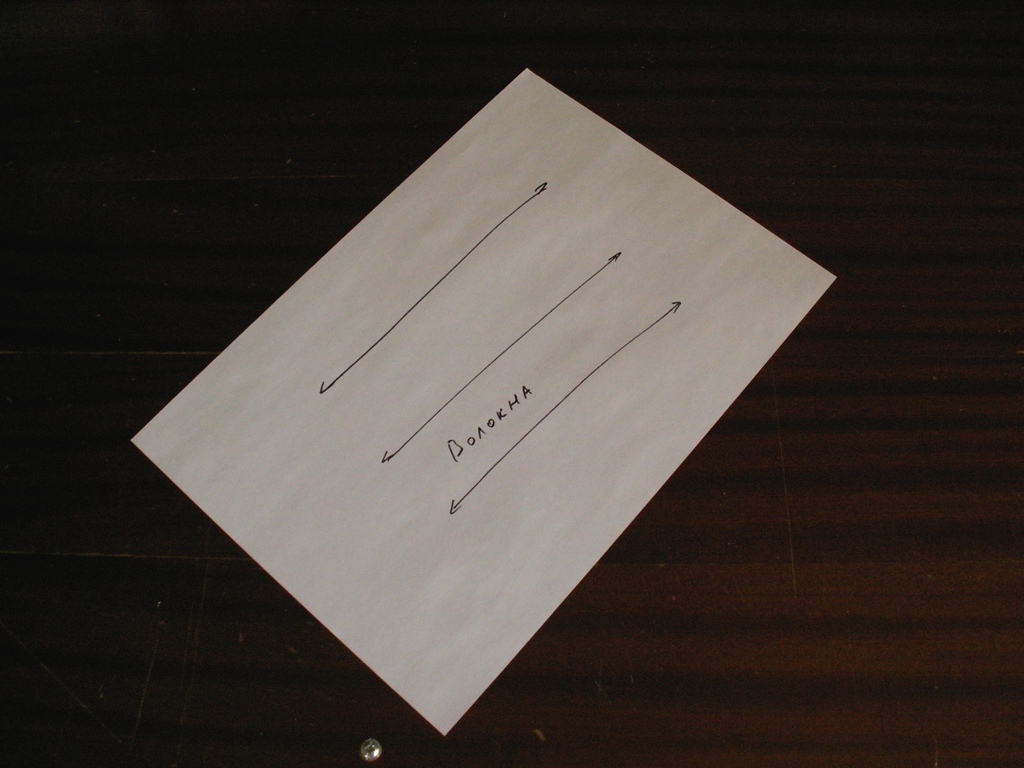
Fibers in office paper are arranged as shown in the photo. Why is it good? This is good because if we have a bunch of sheets, then when we sew them, our “book” will open and scroll well, because the paper fibers will be located along the spine.
It should be noted that OpenOffice Writer has one very interesting function (I would be very grateful if someone wrote in the comments if there is a similar in MS Word). He knows how to set the field mirror. The picture will be clearer:

Thus, we can set the internal fields a bit more external, because we will need them for stitching.
We will need:
1. The sheets themselves (I took the blank from my old school bungle-not-terribly stitched block).
2. Jigsaw. You can take a hacksaw with a thin blade. But the jigsaw gives an even thinner and neat cut. However, it will be difficult for them to cut a thick block.
3. The clip “two-wooden-with-holes-fastened-two-bolts-with-wing-nuts” familiar to you from the first article.
And, perhaps, without clamping here can not do. Fortunately, all its components are worth a penny.
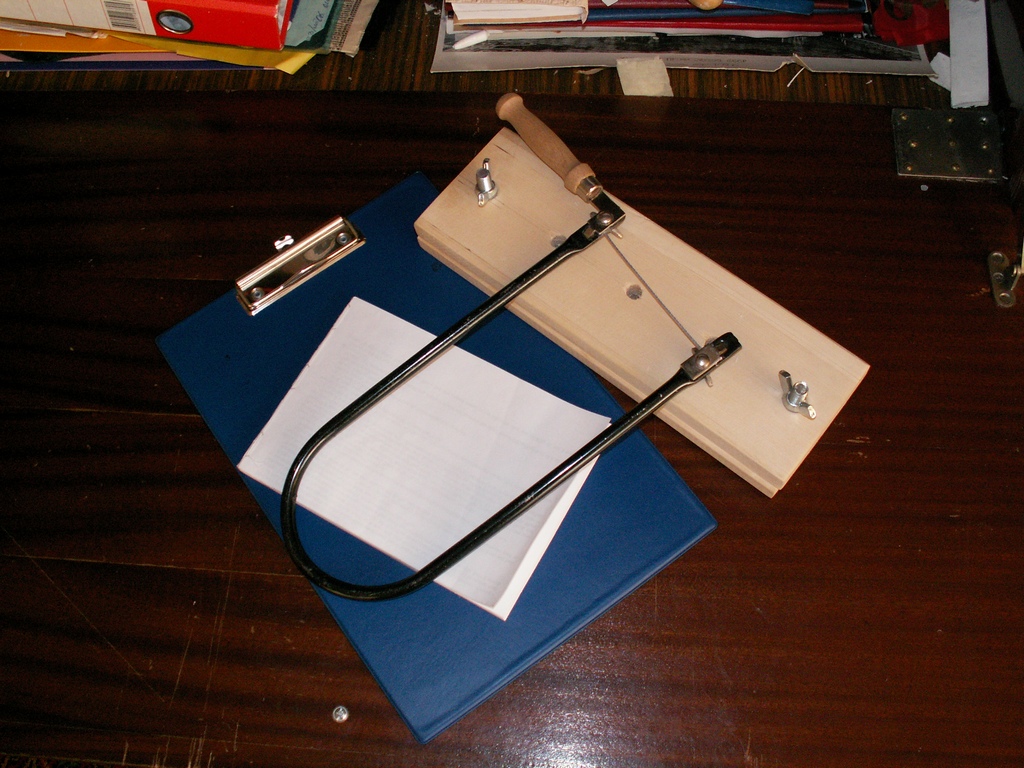
Carefully collect our pile of sheets and clamp between the wood. The stack should protrude 5–6 mm.

Take the jigsaw in hand and sawing. We need to make a pair of cuts in the form of a divided letter "V". In this case, there are about 60 sheets in my pile and I make cuts to a depth of 3–4 mm. If the stack is larger, then we are sawing a little deeper - by 4–5 mm (forget to set the internal fields a little more!). On the long side of an A4 sheet, 6 paired cuts will suffice.
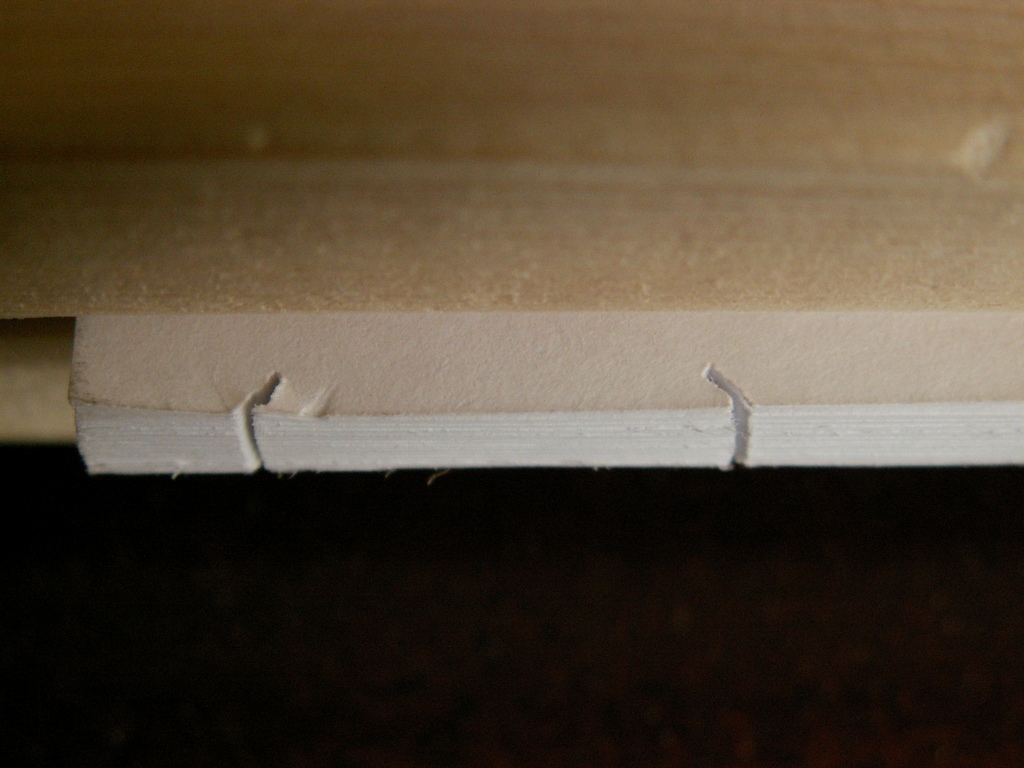
Now we have a stack of kerf sheets. We take a kapron thread - it is thin and durable. Using cuts as wedges, we connect sheets in one block.
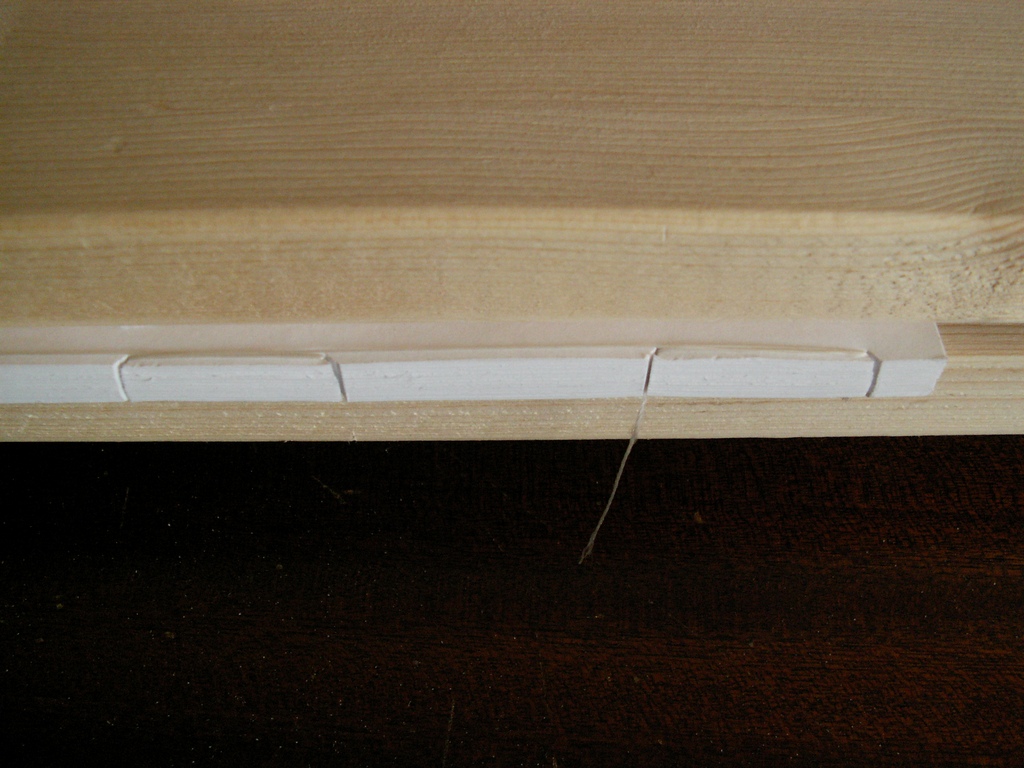
And a little bigger.

We glue the butt with glue, make sure that the glue gets into the cuts. Clamp the block between the wood (do not forget to lay clean sheets so that the block does not stick to the press). We wait until dry. If necessary, trim the edges as described by the link above.
It turns out such a turn.
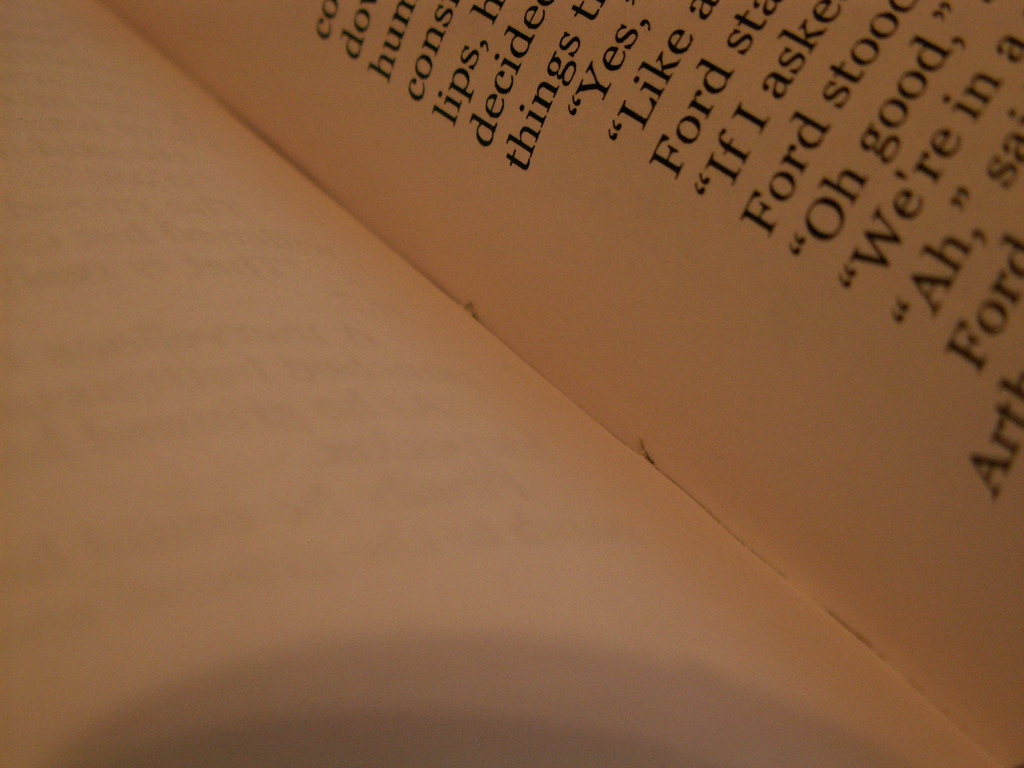
Everything can already be read.
How to make a cover for such a book, wonderfully told here .
If this is too difficult, then we take a sheet of drawing paper. In a familiar printing house, we ask you to make scoring (pushing the groove) according to the dimensions from the article and glue the cover from the drawing paper.
The maximum number of sheets that I sewed in this way is about 130. The block opens easily and is quite strong. Of course, if such a unit is deliberately destroyed, then it will collapse. But just reading is very comfortable. I will not speak about a larger number of sheets - I'm afraid to lie.
Good books, high-quality pdfs and a pleasant reading!
Finally, the hot weather drove me home and had a little time to write the next topic.
In my first article I told how a book can be made from fairly handy materials. I am reading that book now (by the way, the irregularities on the fly-leaf are almost completely smoothed out when the glue has dried completely).
')
In the comments there were questions in the style of "how to roll up individual sheets?" I will tell you about this today.
Of course, the result will be nothing like a book. Unfortunately, I did not have a decent material at hand that could be inserted into a soft binding. But someone may be useful nonetheless.
First, traditionally a few words about the fibers.

Fibers in office paper are arranged as shown in the photo. Why is it good? This is good because if we have a bunch of sheets, then when we sew them, our “book” will open and scroll well, because the paper fibers will be located along the spine.
It should be noted that OpenOffice Writer has one very interesting function (I would be very grateful if someone wrote in the comments if there is a similar in MS Word). He knows how to set the field mirror. The picture will be clearer:

Thus, we can set the internal fields a bit more external, because we will need them for stitching.
We will need:
1. The sheets themselves (I took the blank from my old school bungle-not-terribly stitched block).
2. Jigsaw. You can take a hacksaw with a thin blade. But the jigsaw gives an even thinner and neat cut. However, it will be difficult for them to cut a thick block.
3. The clip “two-wooden-with-holes-fastened-two-bolts-with-wing-nuts” familiar to you from the first article.
And, perhaps, without clamping here can not do. Fortunately, all its components are worth a penny.

Carefully collect our pile of sheets and clamp between the wood. The stack should protrude 5–6 mm.

Take the jigsaw in hand and sawing. We need to make a pair of cuts in the form of a divided letter "V". In this case, there are about 60 sheets in my pile and I make cuts to a depth of 3–4 mm. If the stack is larger, then we are sawing a little deeper - by 4–5 mm (forget to set the internal fields a little more!). On the long side of an A4 sheet, 6 paired cuts will suffice.

Now we have a stack of kerf sheets. We take a kapron thread - it is thin and durable. Using cuts as wedges, we connect sheets in one block.

And a little bigger.

We glue the butt with glue, make sure that the glue gets into the cuts. Clamp the block between the wood (do not forget to lay clean sheets so that the block does not stick to the press). We wait until dry. If necessary, trim the edges as described by the link above.
It turns out such a turn.

Everything can already be read.
How to make a cover for such a book, wonderfully told here .
If this is too difficult, then we take a sheet of drawing paper. In a familiar printing house, we ask you to make scoring (pushing the groove) according to the dimensions from the article and glue the cover from the drawing paper.
The maximum number of sheets that I sewed in this way is about 130. The block opens easily and is quite strong. Of course, if such a unit is deliberately destroyed, then it will collapse. But just reading is very comfortable. I will not speak about a larger number of sheets - I'm afraid to lie.
Good books, high-quality pdfs and a pleasant reading!
Source: https://habr.com/ru/post/97373/
All Articles